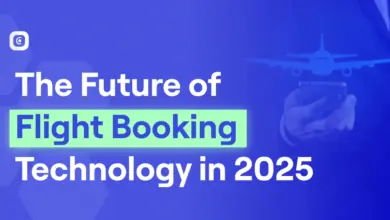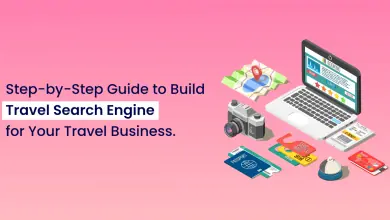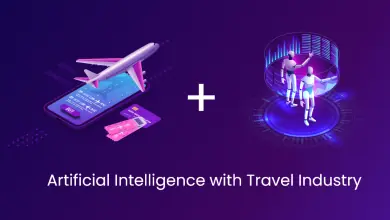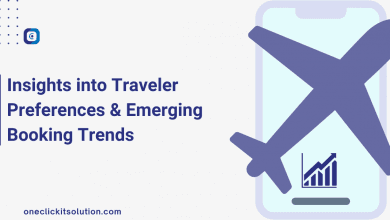EDIFACT vs NDC in Airline Travel Data Exchange
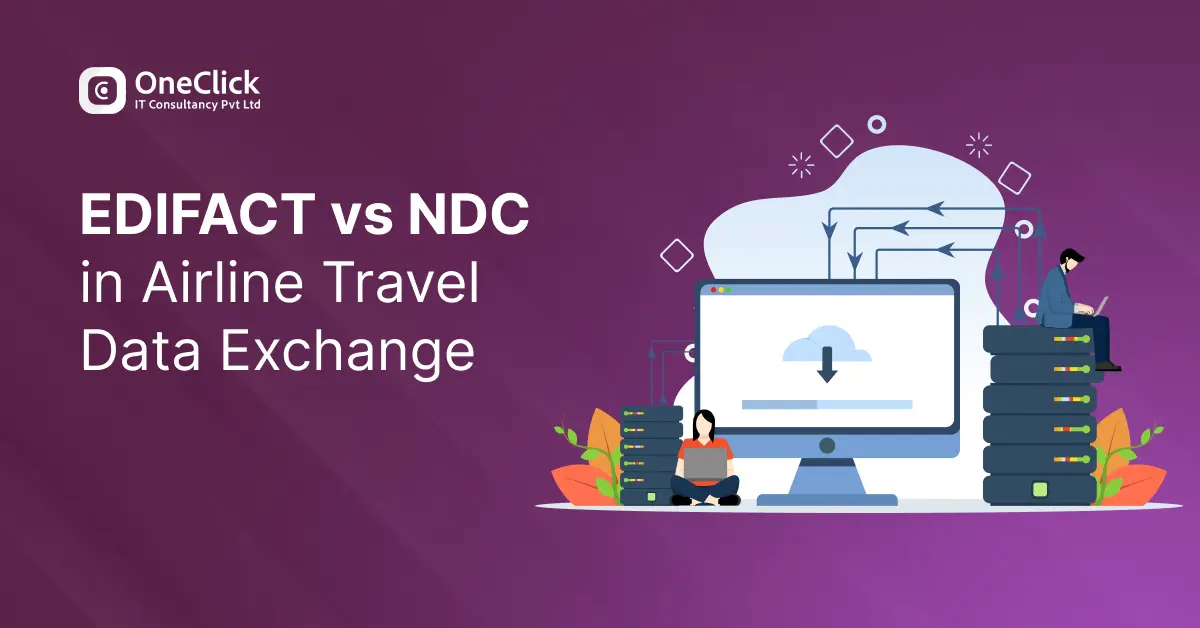
In an address in 2021, Amadeus Industry Prezet’s NDC is highly likely to change the GDS role as a Travel Information Distributor. Illustratively, when Amadeus the Travel GDS was undergoing a rough patch during the COVID-19 lockdown, much of the industry began wondering what is NDC in travel and whether it would substitute standard industry practices. There was growing concern NDC was regarded as a looming threat from travel and airline companies.
He also focused on the incorporation of NDC by explaining that direct deals with subsidiaries of Air France KLM, American Airlines, Singapore Airlines, and International Airlines Group (IAG) permitted bypassing GDSs.
By the year 2021, Amadeus was contemplating a possible conundrum as an increasing number of airlines and OTAs embraced NDC sourced content. During this transition, Prezet recalled a fascinating query on LinkedIn: “What is all the fuss about NDC? Why are we attempting to create a new system when we already have EDIFACT?” This question sparked a growing debate within the industry – what is EDIFACT, and why is does it not seem to be enough? What made airlines and OTAs shift towards NDC? What drove the perception in the industry that NDC posed a threat to GDS systems operating with EDIFACT?
As we near December 2023, there is an urgent need to analyze the gaps diverging between NDC and EDIFACT. This blog will delve into the concepts of EDIFACT vs NDC, outline why EDIFACT falls short in today’s travel industry, and discuss the reason for NDC’s rise as an aggressor toward EDIFACT’s historical supremacy.
What is EDIFACT in the Airline Industry?
In the technologically evolving landscape of the 1980s, the travel industry witnessed the emergence of EDIFACT – Electronic Data Interchange For Administration, Commerce, and Transport. It was ingeniously conceived to manage B2B communications within the travel sector.
Given the era’s technological limitations, where private networks with significant operational costs and constrained bandwidth prevailed, EDIFACT was meticulously designed to ensure communication efficiency. The primary aim was to economize message sizes to be cost-effective and bandwidth-friendly.
This strategic design led to the creation of distinct EDIFACT protocols that segmented the airline ticketing process into well-defined phases. Initially, travel agents consulted published fare charts, ascertaining airlines with competitive rates. Post this, they would check seat availability for the outbound segment.
The subsequent steps involved a detailed review of the “Reservation Booking Designator” for each flight, determining the accessibility of the preferred fare type. Only after these validations was the actual booking initiated. This systematic, albeit intricate, procedure demanded repetition for the inbound journey, culminating in ticket issuance.

This methodological approach, while intricate, was what the 1980s travel infrastructure necessitated. Through EDIFACT, the travel industry found an optimized communication conduit between airlines, travel agencies, and airports, marking a significant leap in global travel connectivity.
What followed this in the 1990s was the advent of “shopping,” symbolizing a significant progression. However, when we talk about EDIFACT vs NDC it still leaned heavily on the concise EDIFACT protocols, necessitating precise sequencing for efficacy.
Yet, the zeitgeist of the 80s and 90s has long passed. While certain nostalgic fashion trends like leather jackets and oversized sneakers might be making a comeback, contemporary consumer behaviors have evolved dramatically. Today’s travelers, akin to global consumers, are accustomed to instant gratifications be it one-click purchases on platforms like Amazon, curated playlists on Spotify, or a tailored roster of movies and series on Netflix.
Modern travel retailers require a communication protocol that’s agile, malleable, and effortlessly customizable for diverse clientele demographics. Moreover, today’s travel landscape is vastly expanded and intricate compared to the bygone decades. The necessity now is for communication protocols that can seamlessly bridge a multitude of stakeholders. Many of these new entrants are likely to prefer XML over the effort of learning EDIFACT.
Should the industry not evolve, there’s a looming risk that emerging innovators might gravitate towards more adaptive competitors, potentially sidelining the conventional travel market. This pressing need for evolution paved the way for the inception of NDC.
NDC: Shaping the Future of 21st Century Retail
In the concept of EDIFACT vs NDC; The New Distribution Capability (NDC) emerged from a pressing necessity: the travel sector needed to align with contemporary digital retail practices. For travelers, the underlying technology remains inconsequential; their primary expectation is that the search and booking processes should be as straightforward as any other online purchase. Consequently, NDC’s premier advantage is its succinct retail process encapsulated in three actions: Shop, Order, and Pay.
This methodological shift presents several benefits in comparison to EDIFACT. Notably, NDC enables travel merchants to deploy global actions, such as “OfferPrice”, facilitating cumulative pricing of an entire journey in a singular move. The significance? A seemingly uncomplicated yet pivotal advancement. With EDIFACT, such expedited processes remain unattainable. Moreover, the clarity of NDC’s language also lays the foundation for more streamlined organizational processes, exemplified by innovations like ONE Order.
The NDC retailing process unlocks a plethora of possibilities, fostering dynamic package offerings and enhanced upselling opportunities. In an era where customer satisfaction is paramount for airlines and travel sellers, NDC ensures travelers receive the e-commerce experience they’ve grown familiar with in other facets of their lives.
What is NDC in Travel?
NDC (New Distribution Capability) is a modern solution that enhances communication and distribution between airlines and travel agents. It’s a response to the shortcomings of EDIFACT, offering dynamic content and more flexible pricing models. So, what is NDC in travel exactly? NDC enables real-time content and personalized offers, aligning the airline industry with the retail and e-commerce standards that today’s consumers are used to.
Take Singapore Airlines as an instance; they’re innovatively utilizing promo codes to grant users augmented options, including bundled packages. Concurrently, agencies experimenting with the Air France-KLM NDC interface are exploring corporate package deals and continuous pricing models, transcending the customary restricted fare tiers.

Improved Content Quality and Superior Service
A fundamental of EDIFACT vs NDC is the consolidated creation of Offers and Orders by the airlines themselves. Essentially, aggregators furnish airlines with pertinent search contexts, such as selected routes, passenger details, and preferences. In response, airlines generate and present real-time offers containing pertinent information.
The ability for airlines to design these bundles and bookings sets the stage for the development of in-house algorithms, driving innovation forward. This equips them with the tools to align supply with demand, granting greater adaptability to experiment, and the flexibility to conduct A/B tests for novel offers across their entire distribution spectrum. Consequently, this also allows both airlines and travel retailers to tailor their propositions at every juncture of the customer journey, catering to diverse traveler profiles.
For instance, they can devise exclusive promotions for certain corporations or present distinct offers to travelers equipped with frequent flyer points or promotional vouchers.
For instance, back in February 2021, American Airlines unveiled new NDC packages specifically tailored for NDC-equipped travel agents. This included a “Corporate Experience” bundle offering exclusive perks like complimentary access to preferred seating and priority benefits for Business Extra passengers.
Furthermore, NDC provides airlines with fresh avenues to effortlessly incorporate non-flight services into their packages, spanning destination amenities, airport shuttles, or vehicle hires. Moreover, NDC introduces innovative payment mechanisms, extending beyond traditional cash or credit card methods to include cryptocurrencies, subscription-based models, or direct settlements.
Regardless of their chosen payment method, travelers have the peace of mind that their reservation is secure, having originated directly from the airline. Additionally, in partnership with Amadeus, NDC equips travel agents with tools to handle service adjustments during disruptions, an aspect that gained heightened significance in the wake of COVID-19.
Enabling Seamless Partnerships and Novelty
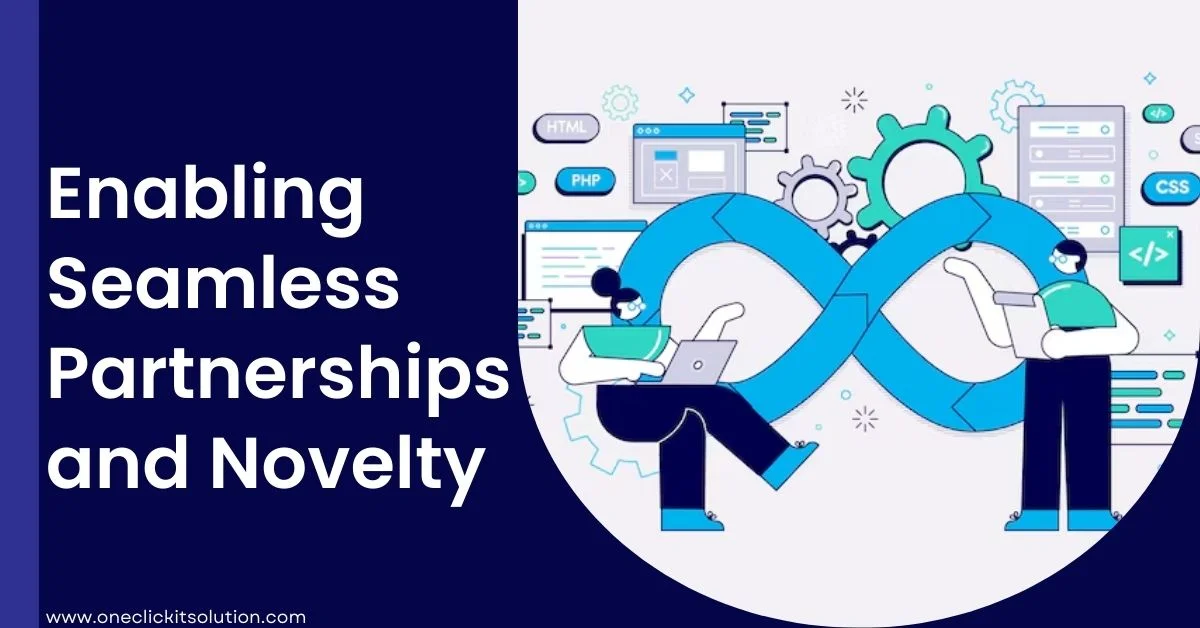
For a significant period, EDIFACT reigned as the go-to communication standard with every industry stakeholder. Consequently, only partners armed with the requisite technology could engage with an “EDIFACT-equipped airline.”
Such constraints made EDIFACT a barrier to numerous potential industry collaborations. To illustrate, Vueling, despite being part of the same airline group as British Airways, couldn’t transfer its passengers to British Airways flights due to its non-reliance on EDIFACT.
However, this changed in November when the teams from Amadeus Altéa and Navitaire collaborated to develop a new NDC-centric client application. This allowed Vueling agents to promptly and efficiently transition passengers to a British Airways flight during interruptions.
It is clear EDIFACT has not sufficiently advanced to meet the dynamically standardized shopping expectations of contemporary travelers on digital platforms. Its basic data structure was crafted with an airline’s data model in mind, without considering other travel ecosystem participants, such as destination service providers and airport retailers. While it worked in the past when travelers were just purchasing flight tickets, today’s travelers expect greater demand for structure and options. These preset limits are quickly becoming irrelevant in today’s new NDC travel industry.
Integration GDS vs NDC platform discrepancies is another example of the gap. The modernization of NDC Airlines offering a larger selection of products previously unavailable through GDS systems made NDC GDS content more fluid and flexible compared to static GDS systems.

NDC and ONE Order, rooted in XML a universally recognized and employed language in the global IT landscape open the doors for enhanced collaborative opportunities and unbridled innovation. These are instrumental in addressing today’s and tomorrow’s industry hurdles. This refreshed “retailing vocabulary” is paving the way for nimble developments in tandem with startups and entities outside the travel domain, potentially accelerating innovation in the travel industry.
For the travel technology giant, Amadeus booking API transitioning from EDIFACT to NDC XML has not just been a technical shift. It has opened up vast avenues in Cloud technology, Artificial intelligence(AI), and Digital ID technology, reinforcing their position as pioneers in the travel industry. This strategic move has also been pivotal in attracting a new wave of top-tier engineers and developers. With the rollout of NDC, there’s a palpable excitement among the next generation of tech talent, keen to play a part in shaping the future of travel and its retail facets.
While the industry has been abuzz with talks about NDC for years, its real-world application seemed more of a future promise to many. But it’s now evident that NDC isn’t just on the horizon; it’s a present-day reality and shows no signs of fading.
In the ongoing EDIFACT vs NDC debate, it’s clear that the travel industry is undergoing a transformation. NDC provides the flexibility and innovation needed to meet the needs of the 21st-century traveler. With NDC airline industry solutions, airlines can now offer richer, more dynamic content, driving better customer satisfaction and increased revenue opportunities.
Leveraging Modern Solutions with OneClick IT Solution
Historically, EDIFACT dominated as the prime communication standard for the airline industry. But in the digital era, airlines and OTAs require a more versatile solution for flight booking api integration. Step into the future with OneClick, your partner for seamless NDC API integration. Why remain tethered to old systems when OneClick can unlock direct connections, freeing airlines from traditional GDS constraints?
Modern travelers demand broadened experiences more than what EDIFACT can provide. OneClick, harnessing the power of NDC, caters to these dynamic needs, offering streamlined hotel bookings, car rentals, and more. Built on the robust foundation of XML, OneClick IT Solution encourages expansive collaboration and paves the way for rapid innovation, aligning with both emerging startups and veteran industry leaders.


